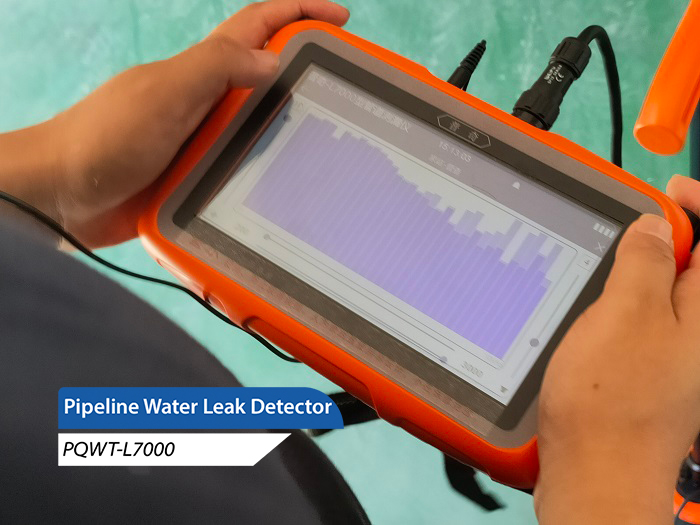Water pipe leakage is a common problem faced by many homes and buildings, which not only leads to wastage of water, but may also cause structural damage, increase water bills and even affect the comfort of the living environment. Therefore, it is crucial to detect and deal with water pipe leaks in a timely manner. The following are a few key points to note when detecting water pipe leakage and response strategies.

1. Selection of detection methods
First of all, understanding and choosing the appropriate water leakage detection method is the first step to solve the problem. Modern technology provides a variety of efficient detection means, such as pressure testing, infrared thermography and ultrasonic detection. Pressure testing locates leaks by monitoring pressure changes in a pressurized pipeline system; infrared thermography detects leaks by using the temperature difference in the leakage area due to water evaporation; and ultrasonic pipeline leak detector determines the location of leaks by capturing the acoustic signals generated by the leaks. Selecting the appropriate detection method according to the specific situation can greatly improve the accuracy and efficiency of detection.
2. Recognize the signs of water leakage
Familiarizing yourself with the possible signs of water leakage in pipes can help detect problems at an early stage. Common signs of water leakage include: dampness on the surface of water pipes, water seepage, a significant drop in water pressure and an abnormal increase in water bills. Once these signs are detected, immediate action should be taken to avoid further deterioration of the problem.
3. Determine when to inspect
Determining the right time for testing is equally important. If you suspect that there is a leak in your pipes, you should not delay and schedule a test as soon as possible. Delay in testing may not only lead to worsening of the leakage, but also increase the cost and difficulty of repair. Therefore, as soon as you notice signs of a leak or suspect a leak, you should contact a professional for testing.
4. Seek professional help
Pipe leakage detection is a highly specialized and technical task, and it is often difficult for non-professionals to accurately determine the location and cause of a leak. Therefore, it is very necessary to consider asking professionals to carry out water leakage detection. With professional equipment and rich experience, professionals can locate the leakage point more quickly and accurately, and provide scientific and reasonable repair solutions.
5. Evaluate the cost and feasibility
It is also essential to understand the cost and feasibility of pipe leakage detection. Different detection methods and repair programs require different costs, and you should choose the right program for you according to the actual situation. At the same time, be careful to avoid falling into the trap of low-cost scams, and choose a reputable and qualified professional organization to carry out testing and repair.
6. Water leakage repair and prevention
Once the water leakage problem is found, immediate measures should be taken to repair it. Depending on the location and extent of the leak, it may be necessary to replace part of the pipe or take other repair measures. In addition, in order to avoid the recurrence of similar problems, the daily maintenance and repair of pipes should be strengthened, such as regularly checking whether the pipe connections are tight, and replacing aging pipes in a timely manner.
In summary, water pipe leakage detection is a complex and detailed process that requires comprehensive consideration of a variety of factors. By choosing the right detection method, recognizing the signs of leakage, arranging timely inspection, seeking professional help, assessing the cost and feasibility as well as taking effective repair and preventive measures, we can better cope with the problem of water pipe leakage and ensure the proper functioning of the plumbing system as well as the comfort and safety of the living environment.
Translated with DeepL.com (free version)








